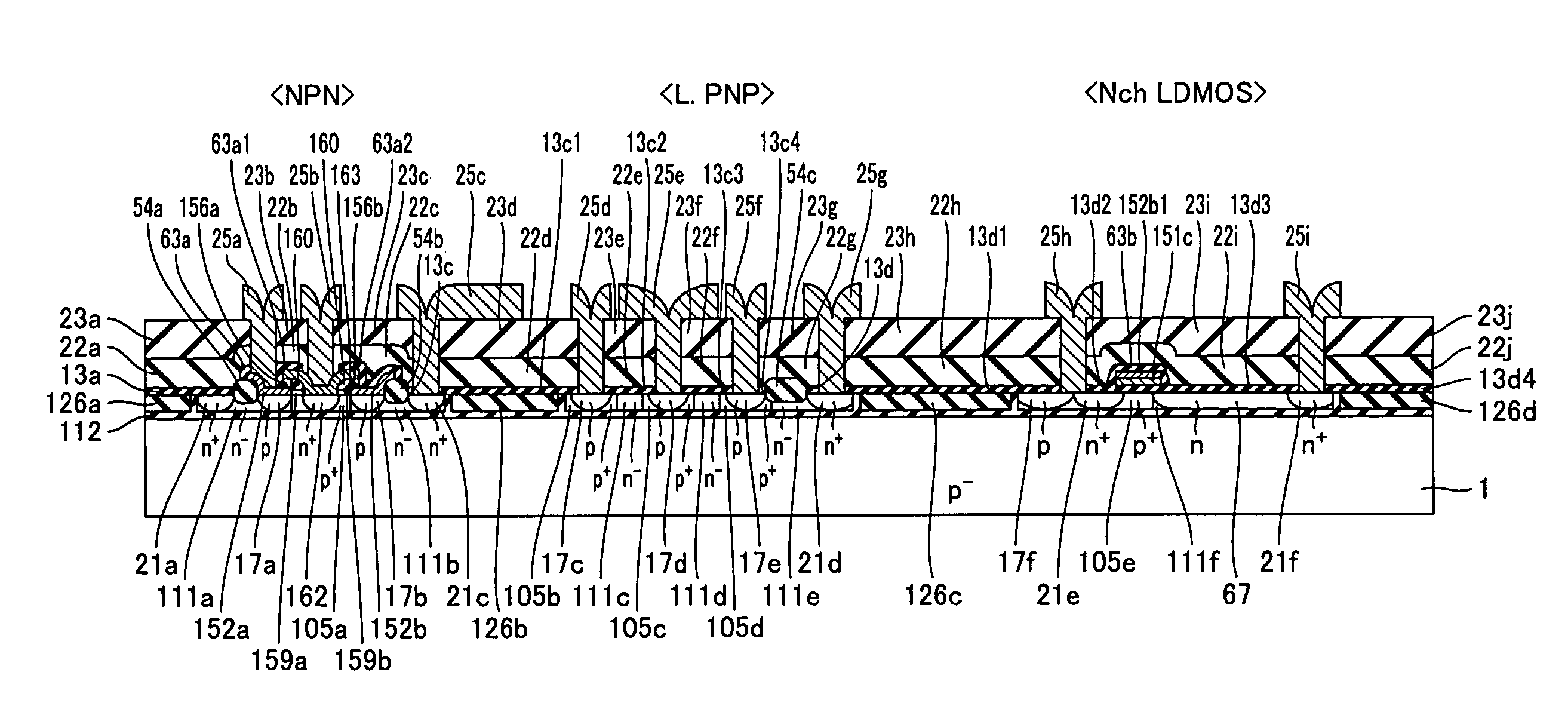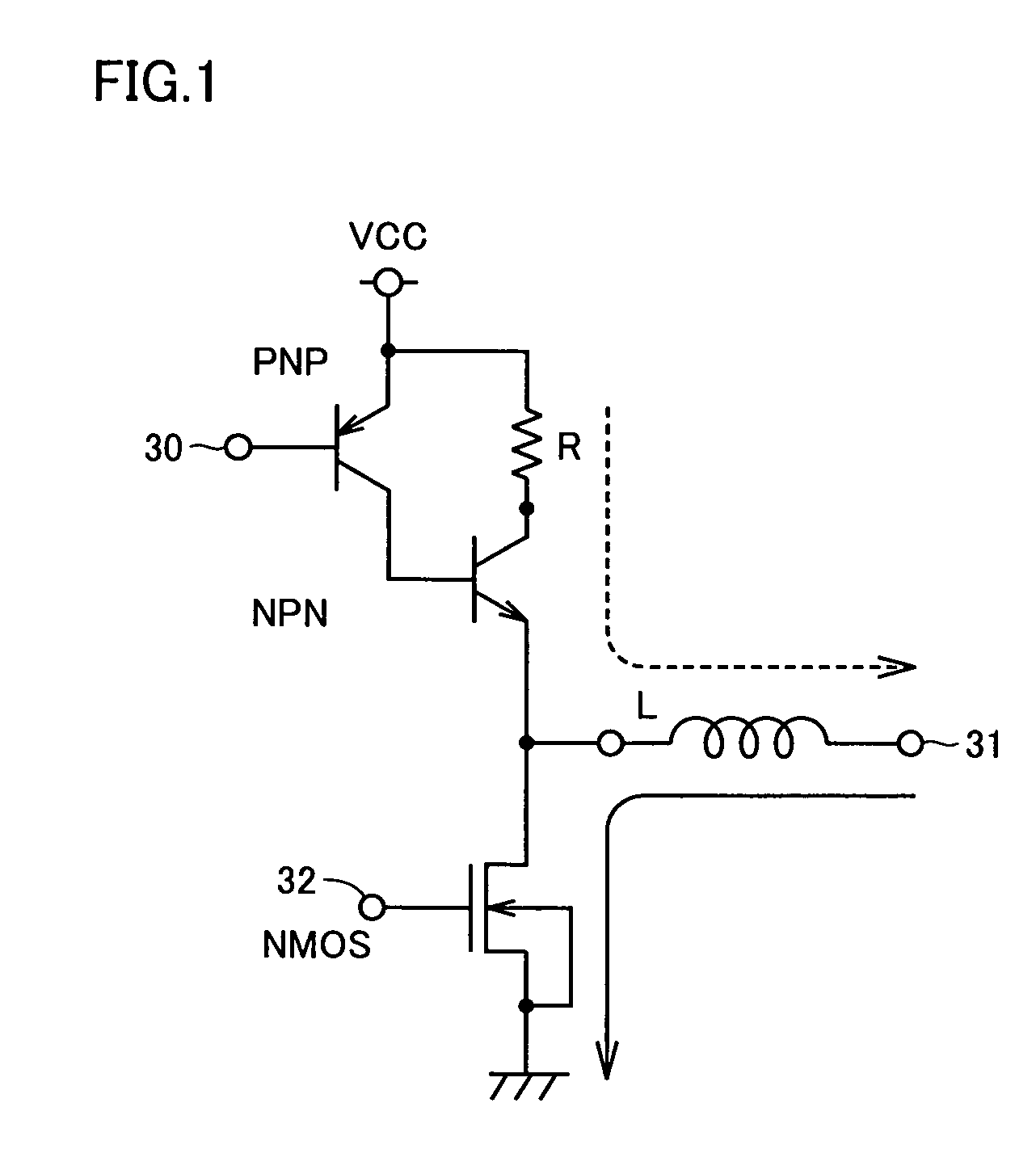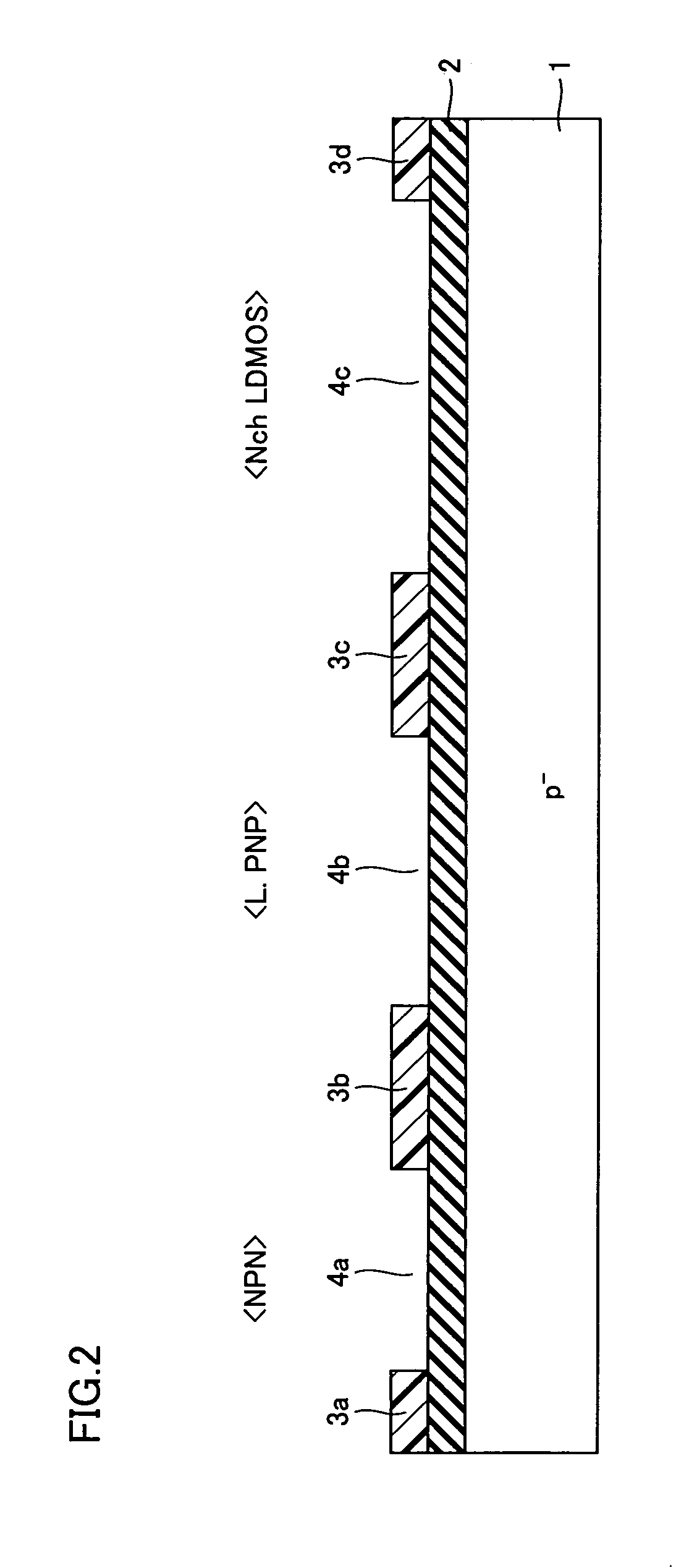Semiconductor device and method of manufacturing the same
- Summary
- Abstract
- Description
- Claims
- Application Information
AI Technical Summary
Benefits of technology
Problems solved by technology
Method used
Image
Examples
first embodiment
[0039](First Embodiment)
[0040]FIG. 1 is an equivalent circuit diagram of a semiconductor device (semiconductor integrated circuit) according to a first embodiment. As shown in FIG. 1, bipolar transistors are used in an output circuit of the semiconductor device.
[0041]It is assumed that a large equivalent inductor L is present on an output destination. An output transistor on a power supply Vcc side (upper side in FIG. 1) is formed of a Darlington connection of pnp and npn transistors. More specifically, an emitter of the pnp transistor is connected to a power supply terminal, a collector of the npn transistor is connected to the power supply terminal via a resistance (R), and a collector of the pnp transistor is connected to a base of the npn transistor. A collector current of the pnp transistor directly drives the base of the npn transistor. The Darlington connection thus formed provides the transistors effectively having a high current amplification factor hFE. By providing resist...
second embodiment
[0101](Second Embodiment)
[0102]A second embodiment of the invention will now be described with reference to FIGS. 34 to 37.
[0103]In the first embodiment described above, contact resistances may rise due to miniaturization of the elements. Accordingly, a device, which can suppress rising of the contact resistance, will now be described as a second embodiment.
[0104]FIG. 37 shows an example of a distinctive structure of the semiconductor device according to the second embodiment. As shown in FIG. 37, p+-diffusion layers (heavily doped impurity diffusion layers) 71a, 71b, 71c and 71d are formed at the surface of p-type diffusion layers 17a, 17c, 17d and 17e, respectively. p+-diffusion layers 71a–71d contain p-type impurities at higher concentrations than p-type diffusion layers 17a, 17c, 17d and 17e, respectively. The concentrations of p-type impurities contained in p+-diffusion layers 71a–71d are substantially in a range from about 1×1019 cm−3 to about 1×1021 cm−3.
[0105]Silicide layers...
third embodiment
[0116](Third Embodiment)
[0117]A third embodiment of the invention will now be described with reference to FIGS. 38–51.
[0118]A Hetero-junction Bipolar Transistor (HBT) of an SiGe base is a high-frequency bipolar transistor for use in the next generation of the ultra-high speed communication system (optical communication system of 10 Gb / s or higher, wireless LAN, mobile communication system and others).
[0119]For producing a high-frequency npn transistor, it is necessary to reduce a thickness of the base. However, if the thickness of the base is reduced, it is difficult to ensure a collector-emitter breakdown voltage. Conversely, the collector-emitter breakdown voltage can be ensured by increasing the concentration of impurities in the base. However, this impedes ensuring of an intended base-emitter breakdown voltage.
[0120]In view of the above, the base of the npn transistor may be made of an epitaxial growth layer (e.g., containing 10%–30% of Ge) of SiGe providing a narrower band gap ...
PUM
 Login to View More
Login to View More Abstract
Description
Claims
Application Information
 Login to View More
Login to View More - R&D
- Intellectual Property
- Life Sciences
- Materials
- Tech Scout
- Unparalleled Data Quality
- Higher Quality Content
- 60% Fewer Hallucinations
Browse by: Latest US Patents, China's latest patents, Technical Efficacy Thesaurus, Application Domain, Technology Topic, Popular Technical Reports.
© 2025 PatSnap. All rights reserved.Legal|Privacy policy|Modern Slavery Act Transparency Statement|Sitemap|About US| Contact US: help@patsnap.com



